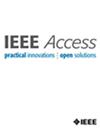Dual-Stream Contrastive Learning for Medical Visual Representations Using Synthetic Images Generated by Latent Diffusion Model
IF 3.6
3区 计算机科学
Q2 COMPUTER SCIENCE, INFORMATION SYSTEMS
引用次数: 0
Abstract
Deep learning-based medical image processing methods can enhance diagnostic accuracy while significantly accelerating clinical decision workflows. However, in order to learn better visual representations, such approaches usually need substantial amount of expert-annotated data, which are highly costly. To address this issue, we propose a novel approach called Dual-Stream Contrastive Learning with Cross-Scale Token Projection (DCL-CsTP), which aims to enhance visual representations and transferable initializations. Specifically, a latent diffusion model (LDM) is leveraged to generate high-quality synthetic medical images in order to expand the dataset. Then we utilize the proposed dual-stream architecture that consists of a global semantic relations stream and a local detail relations stream to learn discriminative medical image representations from the dataset. Furthermore, a cross-scale token projection is designed to enable the model to capture various scales of focus in medical images. Comprehensive experiments are performed on two downstream tasks: medical image classification and segmentation. For multi-classification of pneumonia, our DCL-CsTP method achieves 95.90% accuracy. For lesions segmentation, our DCL-CsTP method attains 89.73% dice coefficient on the International Skin Imaging Collaboration 2018 (ISIC 2018) dataset and 82.50% dice coefficient on the Kvasir-SEG dataset. The performance superiority of the model pre-trained by DCL-CsTP is conclusively demonstrated through the above experiments on various dataset, which shows that DCL-CsTP can enhance diagnostic precision and alleviate radiologists’ image screening burdens.基于潜在扩散模型合成图像的医学视觉表征双流对比学习
基于深度学习的医学图像处理方法可以提高诊断准确性,同时显著加快临床决策工作流程。然而,为了学习更好的视觉表示,这种方法通常需要大量的专家注释数据,这是非常昂贵的。为了解决这个问题,我们提出了一种新的方法,称为双流对比学习与跨尺度令牌投影(DCL-CsTP),旨在增强视觉表示和可转移的初始化。具体来说,利用潜在扩散模型(LDM)来生成高质量的合成医学图像,以扩展数据集。然后,我们利用所提出的双流架构,即全局语义关系流和局部细节关系流,从数据集中学习判别医学图像表示。此外,设计了一个跨尺度令牌投影,使模型能够捕获医学图像中不同尺度的焦点。对医学图像的分类和分割两个下游任务进行了综合实验。对于肺炎的多分类,我们的DCL-CsTP方法准确率达到95.90%。对于病灶分割,我们的DCL-CsTP方法在国际皮肤成像协作2018 (ISIC 2018)数据集上达到89.73%的骰子系数,在Kvasir-SEG数据集上达到82.50%的骰子系数。通过以上在各种数据集上的实验,最终证明了DCL-CsTP预训练模型的性能优势,表明DCL-CsTP可以提高诊断精度,减轻放射科医生的影像筛查负担。
本文章由计算机程序翻译,如有差异,请以英文原文为准。
求助全文
约1分钟内获得全文
求助全文
来源期刊

IEEE Access
COMPUTER SCIENCE, INFORMATION SYSTEMSENGIN-ENGINEERING, ELECTRICAL & ELECTRONIC
CiteScore
9.80
自引率
7.70%
发文量
6673
审稿时长
6 weeks
期刊介绍:
IEEE Access® is a multidisciplinary, open access (OA), applications-oriented, all-electronic archival journal that continuously presents the results of original research or development across all of IEEE''s fields of interest.
IEEE Access will publish articles that are of high interest to readers, original, technically correct, and clearly presented. Supported by author publication charges (APC), its hallmarks are a rapid peer review and publication process with open access to all readers. Unlike IEEE''s traditional Transactions or Journals, reviews are "binary", in that reviewers will either Accept or Reject an article in the form it is submitted in order to achieve rapid turnaround. Especially encouraged are submissions on:
Multidisciplinary topics, or applications-oriented articles and negative results that do not fit within the scope of IEEE''s traditional journals.
Practical articles discussing new experiments or measurement techniques, interesting solutions to engineering.
Development of new or improved fabrication or manufacturing techniques.
Reviews or survey articles of new or evolving fields oriented to assist others in understanding the new area.
 求助内容:
求助内容: 应助结果提醒方式:
应助结果提醒方式:


